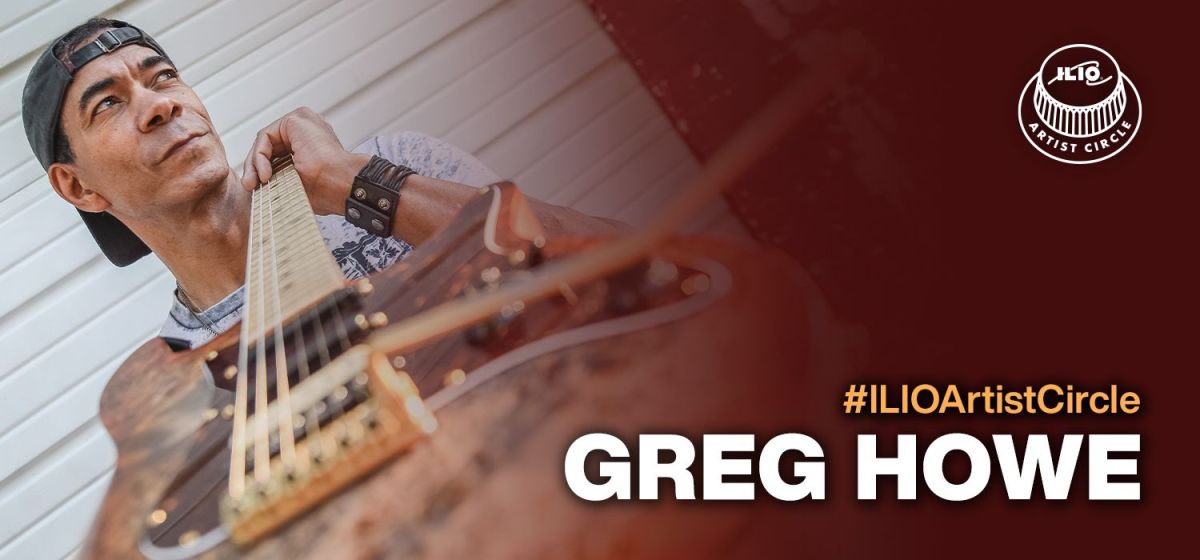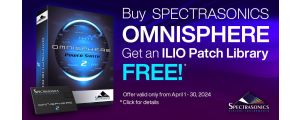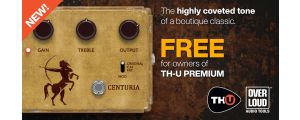Greg Howe is a hugely influential guitarist who has spanned genres from metal to fusion to many progressive styles that defy labels. He has been voted tenth in the “Top 10 Pick Squealers of All Time” by Guitar World, his self-titled debut album (1988) was ranked tenth in the all-time top 10 list of shred albums, and they ranked his 2017 Wheelhouse album #6 in “The 20 Best Guitar Albums of the Decade”. His career has been marked by mostly his own projects, but surprisingly, he has spent time touring with mega-stars like Michael Jackson, Justin Timberlake, ‘N Sync and Enrique Iglesias. On the eve of the release of his new pack for the Overloud TH-U guitar amp simulation software, we had a chat about his life, career, and gear.
Beginings
“I’ve always been into music; music was a natural thing for me, even before I understood about notes, or anything."
“For as far back as I can remember, my brother and I could sing,” Greg recalls. “We could harmonize: we kind of just understood music and song structure, we understood rhythm.” His parents had a guitar in the house and he picked it up and tried to play it, just exploring by ear and feel. So when a houseguest showed him a few open chords, he was on his way. His only interest in guitar at the time was to accompany his brother and himself while they sang the pop hits of the day. The next time that guest returned to jam with him, when the guest bent a note, Greg was transfixed. “Whoa, what was that?”
“And so I discovered lead guitar."
He started playing the guitar in earnest, happy to be bending notes, and then he figured out the pentatonic scale by ear and had an epiphany. “Wait, there are people on the radio doing these things,” he realized, “I had never noticed it before. I started exploring and challenging myself. I got into Jimmy Page, I got into Led Zeppelin, learning those solos, figuring things out, and it was pretty easy for me to learn that stuff.” Then one fateful day he heard the debut album from Van Halen. “I remember thinking, ‘Whatever he’s doing seems impossible, but obviously he’s doing it, so it is possible. And I’m going to be the first kid on the block who figures it out.’ That became my goal — I wanted to be the guy who could play Van Halen riffs and play “Eruption.”
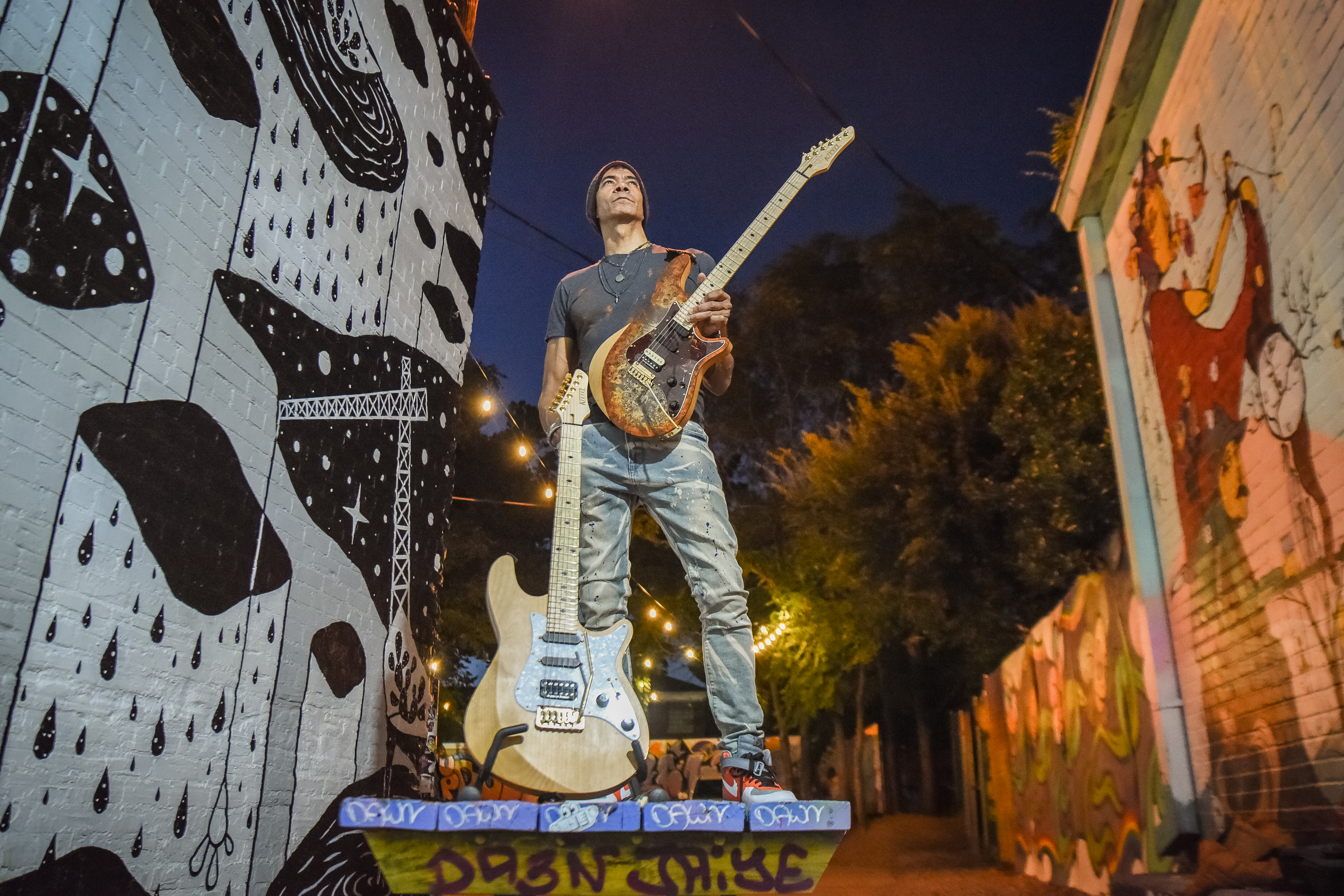
This was back in 1978, when there was no MTV to see your favorite bands play and no Internet to watch videos. So Howe (and countless other guitar fans) had no way of knowing how Eddie was getting that sound. He found a tablature book that defined how to play “Eruption” as flamenco fingerpicking, so he spent a summer taking classical guitar lessons in hopes of learning the technique. But although his teacher could play the notes, Greg knew it didn’t sound right. It wasn’t until he got to see the band live that from his nosebleed seats, with a pair of binoculars, he saw Eddie tapping on the strings. Epiphany #2! He remembers racing up to his room when he got back from the concert and playing for hours, perfecting his newly acquired technique.
“I knew at that point that I just wanted to do that. Until then, it was just a typical adolescent ‘guitar is cool, I want to be the guy that looks cool, and plays cool.’ Plus, I was kind of shy, and it made it easier to make friends and meet girls. But then I really fell in love with music. So I just started to expand my view: first it was Van Halen, then Randy Rhoads and all those LA guys, and then I moved into Pat Metheny, John Scofield, Lee Ritenour and Scott Henderson, and that led to Allan Holdsworth — I became totally immersed in it all.” Listening to Howe today, you can hear the legato in his playing that comes from Holdsworth, and the quirky note choices that speak to the Scofield influence, to name just a few attributes.
Going For It
Growing out of his teen bands, Greg and his brother formed a band and tried hard to get discovered and signed, but to no avail. In an effort to move his career forward, Howe sent in a tape for evaluation in Mike Varney’s “Spotlight” column in Guitar Player, which showcased up-and-coming talent. Showing a savviness that belied his years, he not only sent a tape to the P.O. box they listed, he also sent one Fed-Ex requiring a signature to the main office, figuring if someone had to sign for it they would notice it and not just throw it in the usual pile of submissions. His tactic worked, as he heard back quickly from Varney, who offered him a four-record deal as a solo guitarist. Not wanting to abandon his band, he worked out a deal for two solo records and two band records. His first record, his self-titled debut was an instant success.
His next two records featured the band, showing off another side of his talents, and his fourth record, Introspection showed both his growth as a player and a return to the more varied and progressive music he had sent in for his audition. Howe explains, “By the time Introspection was ready to be made he (Varney) had some other labels that were more diversified. And I got to record that album at home, so I was able to get away with things.”
“I felt that if I was going to expand and try to become a recognizable player it’s not going to happen by just trying to play faster, by adding an extra octave to an arpeggio: after Paul Gilbert, what do you do?"
“That’s when I decided I wanted to add some of the more sophisticated sounds that I heard in jazz and fusion (I don’t mean to sound condescending), and combine that with the fire and aggression of the rock/metal shredders. That had been my vision for a long time, so on Introspection I could feature some of the techniques that the shredders like while at the same time adding in some harmony and other elements from the other genres.”
Explaining His Growth Path
Howe looks back and recounts how he developed his style; “I was just grabbing things from everywhere when I was young. Whatever I heard on the radio I wanted to try to learn. Stevie Ray Vaughan came out – gotta learn that! I didn’t “get” Hendrix early on; I felt that if I could play Van Halen stuff why did I want him? Then when I got older I heard it correctly, and I was like, ‘Jesus Christ, how did I miss this chapter?’”
“In general, if I heard somebody and it was cool I had to learn it. I was just absorbing everything I could."
“The more I got into music, music that previously hadn’t been attractive to me started to become more interesting. In fusion, I didn’t understand the chords/harmony as much, so I wanted to learn more about them. I was a sponge. I really get uninspired after a while unless I go down unchartered territory — I have to do it. The good thing about that is if you listen to my albums they each have their own personality.”

Top Tier Touring
While Greg was enjoying more and more critical and fan appreciation for his solo work, an offer came out of left field. He tells the story: “I met Jennifer Batten at a NAMM Show. I knew who she was, of course, and she told me she was getting ready to leave her gig with Michael Jackson. If she recommended me they wouldn’t even audition anyone else; did I want the gig? I said of course I do! So it ended up that she didn’t leave at that time, and after a while, I stopped working on the music and decided I had to get on with my life — the gig was never going to happen.”
“Did I want the gig? Of course I do!”
“I’m teaching a lesson one Monday night when I get a call from the MD and he says, ‘we’re going to need you to catch a flight over to Amsterdam for a gig that’s happening on Wednesday.’ I said yes, not knowing how I was going to pull this off. I ended up only having six hours to prepare before I had to leave for a Michael Jackson tour! Wednesday comes,” he continues, “and the MD wants to do a run-down of some of the material with me, probably just to get me on the stage and make sure he has a guy who can really play. We start off and I get through the first tune OK. We get through the second song, and then the third and I’m doing fine: I’m starting to feel like I can do this. Then the production manager comes by and says, ‘you’re doing great. Let’s talk about the choreography’… I’m like ‘What?! If you watch any videos of that tour (The HiStory tour), the guitar player is really the only person in the band who interacts with Michael. And I also had to memorize the presets on Jennifer’s Digitech pedal unit, because it was critical to have the right sounds. So I’ve got three things to deal with: playing the songs, getting the right sounds, and now remembering where to go/what to do physically as part of the show. Suffice it to say I got through it, and the tour went great. It was only five weeks, I wish it were longer.”
“Now the thing about doing a Michael Jackson tour is, once you’ve done that you can get a lot of other work. Music directors want to be able to say we got Michael’s guitarist… his drummer, his bass player. That’s bragging rights for them. So I got a lot of other high-profile pop work after that.”
Greg's Tones in a Box
Overloud, a maker of music software, has a product called TH-U, which is a powerful amp simulator/effects modeling suite. They recently released The Greg Howe Pack, modeling all his favorite amps and effects so you can play through “his rig.” Asked about it, Greg offered, “I’ve used it a bit, but I haven’t recorded with it yet. It’s remarkable; it’s the real deal.”
One special element in the pack is the model of his signature Carl Martin Plexitone pedal. Sharing what makes it special, Howe said, “I fell in love with the Plexitone pedal. It’s weird, but it doesn’t compress like most overdrive pedals. They all make the sound a little smaller, like they squeeze the sustain out of it. The Plexi stays nice and open, so that was the foundation of all the gain structure in this thing. It’s really three pedals; it’s got the boost, the crunch and the hi-gain, just like the front of an amp. They all really sound different, they behave differently, and they all can be used in any configuration that you want.”
“It came out exactly as I wanted it to, and I use it all the time.”
Coupled with the model of his signature DV Little GH 250 Mark amp, it gives him one of his favorite clean tones. “That amp is really spanky and chimey,” he enthuses, “I love that. It’s all solid state, so I should have no business liking it… but it really does have that fluidity to it.”
On The Horizon
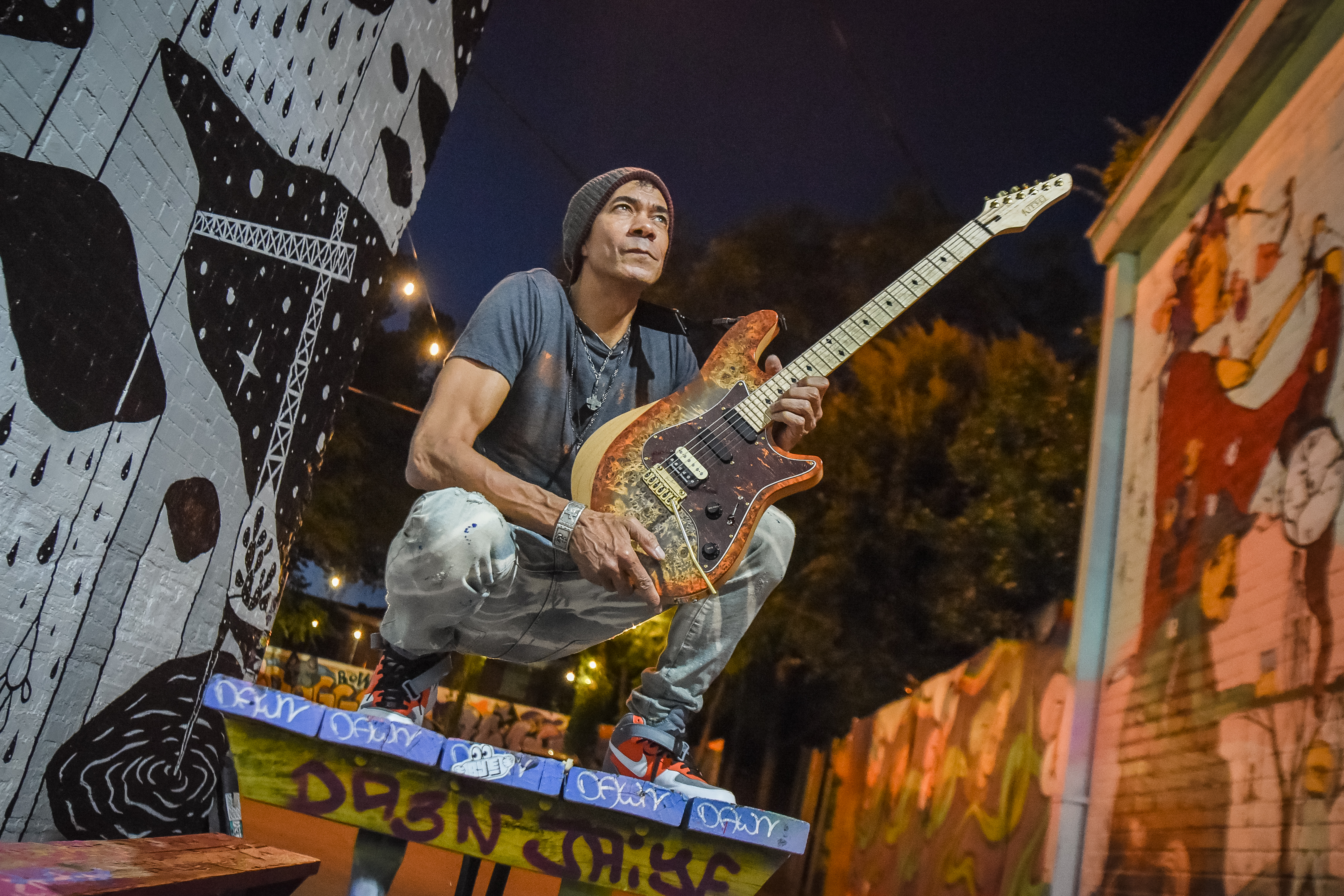
“I was very lucky to have worked with Simon Phillips on his Protocol IV recording,” Greg shared, “which was nominated for a GRAMMY. While I was out in California recording that, Simon said that he was also producing a project with this guy Darwin, and he’d like it if I could put down a couple of solos for it. So we did that, and it was really nice. And I’ve done a couple more for him; I just finished the fourth Darwin project, and I did all the guitars on this one. A lot of guitar playing!”
“And then I’m working on doing a bunch of online instructional stuff; I haven’t had any teaching materials out for a long time now, since my corny ‘80s REH video.”
“I also have a tour coming up this summer, so I really want to have a new album done by then. Plus, I have a book deal that I’m trying to finish up in the next few weeks. It’s an instructional e-book — I’ve developed this way of teaching how to use arpeggios over different chords so you can quickly have a lot more color in your playing, and not sound so tonic-y or pentatonic-based.”
For more info on Greg Howe, visit here.

